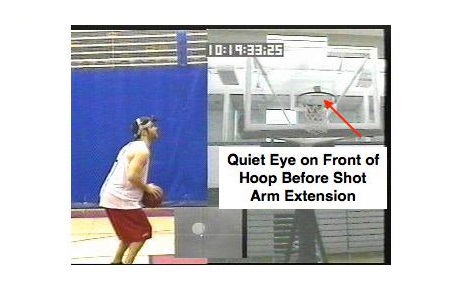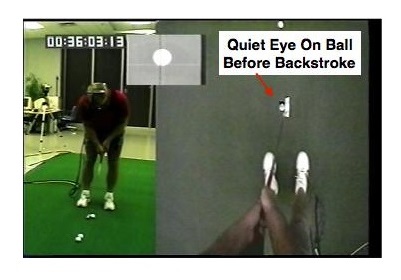|
The Quiet Eye (QE) Defined.
The quiet eye is measured with a light, mobile eye tracker that is synchronized to an external camera that records the movements of the performer.
The quiet eye has five measureable characteristics. It is formally defined as the final fixation or tracking gaze that is 1) located on a specific location or object in the task space within 3° of visual angle (or less) for a minimum of 100 ms. The 2) onset of the QE occurs prior to a 3) critical movement in the task, and the 4) offset occurs when the gaze deviates of the object or location by more than 3° degrees of visual angle (or less) for a minimum of 100 ms. 5) The duration of the quiet eye is longer in experts than non-experts, and also longer during successful versus unsuccessful trials (Vickers, 1996, 2007). The quiet eye is organized in the brain, and involves the neural processing steps shown in the next chapter.
The five quiet eye characteristics are task specific and vary according to the type of motor task being performed.
The QE location shown in Golf Putting and the Basketball Free Throw


|
